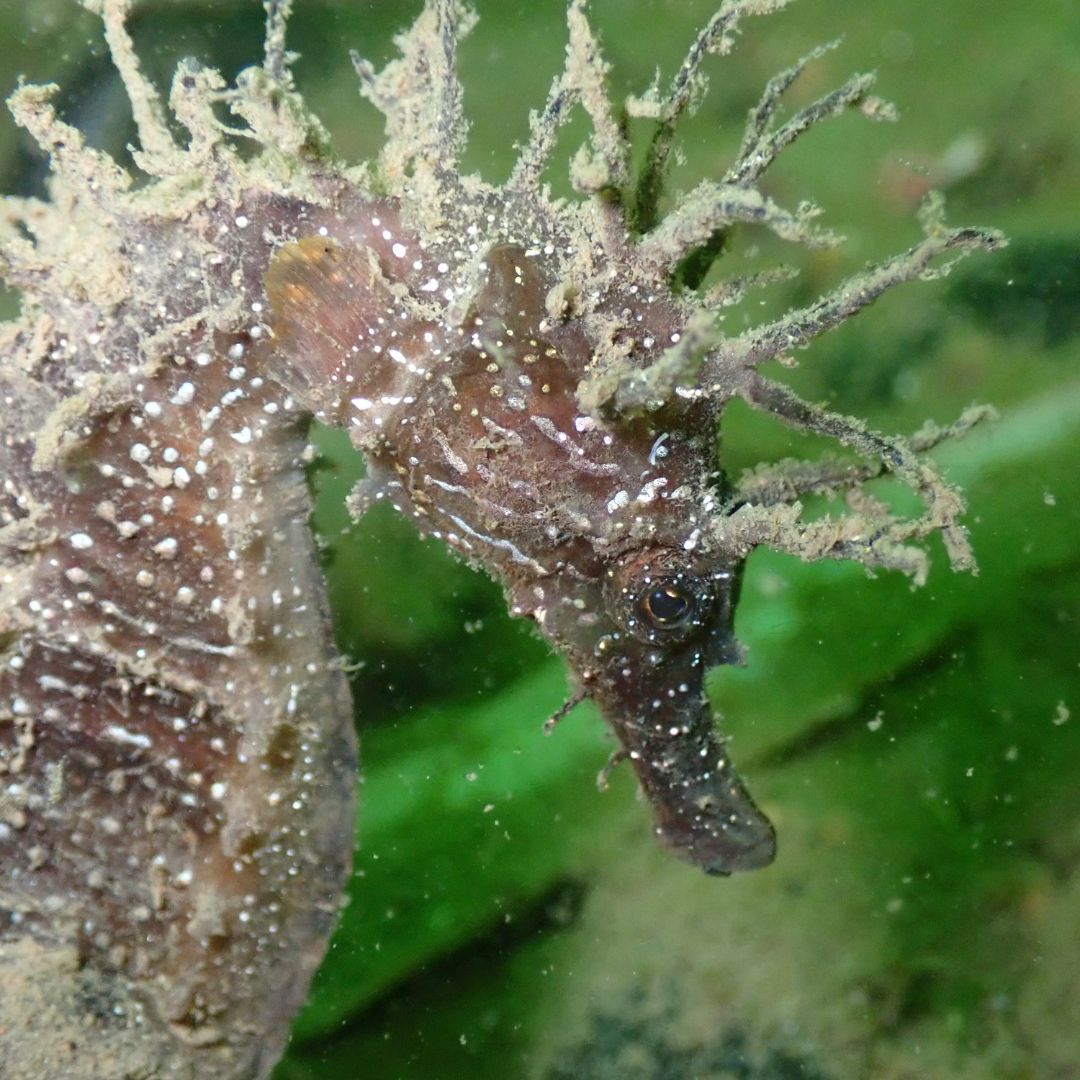Study reveals that MPAs on the Iberian Peninsula are not enough to protect seahorses
A team of researchers, including MARE researchers Friederike Peiffer, André Lima, Sofia Henriques, Emanuel Gonçalves, Miguel Correia and Gonçalo Silva, recently published a study in the scientific journal Global Ecology and Conservation. The study reveals that the two species of seahorse found in Portugal, the common seahorse and the long-toed seahorse, have a low level of protection.

Seahorses typically live in coastal areas, which leaves them vulnerable to threats such as pollution, bycatch and habitat loss due to human activity. In an interview with SIC Notícias, Friederike Peiffer, a MARE researcher and first author of the study, said that "In the rest of the country there are no studies that allow us to infer population trends, but this study confirms that the Tagus and Sado estuaries, along with the Ria Formosa, are the most important places for seahorses in Portugal".
According to the study, Marine Protected Areas cover only 20 per cent of the estimated habitat for these species in Portugal, and less than 12 per cent on Spain's Atlantic front, with only 0.5 per cent being fully protected.
"The vast majority of Marine Protected Areas do not include specific measures for the protection of seahorses and sessile or low mobility organisms in their management plans, even when management plans do exist," explains Gonçalo Silva, the study's coordinator. "It is absolutely essential to create protection measures for these species and to provide Marine Protected Areas with human, financial and technical resources so that they can manage activities and biodiversity in a sustainable way," he adds.
In Portugal, seahorses are protected by law (decree-law no. 38/20212) and are also a flagship species widely used to raise awareness of the conservation of marine biodiversity and its ecosystems.
To access the article click HERE
